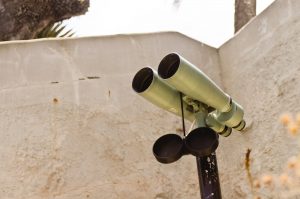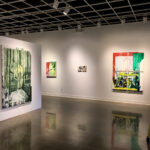Trying to look at objects or creatures over water can be quite a challenge. This means that the binoculars you choose to buy must be made to suit your boating, fishing, or sailing expeditions. They should have plenty of great features that will enable them to do their job and do this perfectly. This article will help you determine what to look for when buying your binoculars.
Optical glass quality
Most people tend to ask why some binoculars are more expensive than others. You will discover that high-quality binoculars will have dense optical glasses that are painstakingly designed, polished, and shaped to provide better resolution and eliminate flaws. This labor-intensive procedure is what makes binoculars of a superior grade to cost more money.
Field of view
This is the broadest dimensions of the circular viewing area that is seen through the binoculars. This field is usually expressed in feet at 1000 yards distance. The field of view usually decreased with increased magnification. However, it is usually more a function of the type of prisms, size, and eyepiece lenses that are used. A wider field of view will allow for excellent viewing and scanning of several objects but can cause a single object to get lost in the images surrounding it. A narrower field of view is ideal for better isolation of subjects but is not ideal for marine use where scanning a large area is necessary.
Magnification
Magnification or power of binocular glasses is the number of times larger than normal an object will appear. When in the sear, your main objective will be finding objects that are in a distance. This is means that the larger the magnification, the better your ultimate view will be. However, higher magnification can also cause problems when it comes to stabilizing your image. This is why most binoculars ideal for marine activities will have magnifications of about 7x. This will provide enough power to enable you to view images without triggering any stabilization problems.
Waterproof and fog-proof features
Naturally, marine binoculars should be waterproof. However, remember that there are different types of waterproofing available. Most waterproof binoculars available will only be protected against water. Ensure that you purchase binoculars that are nitrogen-purged and have an O-ring seal. This means that the binocular’s body has been charged using dry nitrogen gas that inhibits fogging that occurs when temperatures quickly change. This will guarantee protection from all types of moisture and water and will prevent fogging up.
Anti-reflective lens coatings
Every glass surface in the binocular acts as a barrier that light passes through when moving to the eye. Manufacturers use anti-reflective coatings to increase the amount of light that passes through these air-to-glass surfaces. The number and type of anti-reflective lens coatings used on the binocular lenses will greatly impact how crisp and brilliant the images will appear. Anti-reflective coating helps to eliminate light scattering and internal reflections and will reduce glare and light loss. Additionally, they produce sharper images that have more details and boost contrast, particularly in low light.
When buying binoculars for your water expeditions, most features may be difficult for many buyers to evaluate. You can consider the statements made by the manufacturer and their reputation in the industry. Take time to test different binoculars and evaluate them before making a decision. This will give you an idea of how well they will work when you use them for your escapades.








